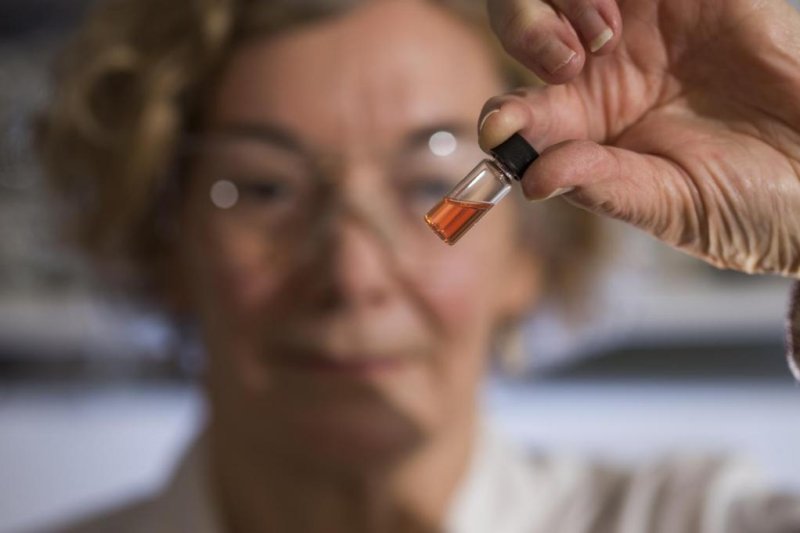Welcome to DU!
The truly grassroots left-of-center political community where regular people, not algorithms, drive the discussions and set the standards.
Join the community:
Create a free account
Support DU (and get rid of ads!):
Become a Star Member
Latest Breaking News
General Discussion
The DU Lounge
All Forums
Issue Forums
Culture Forums
Alliance Forums
Region Forums
Support Forums
Help & Search
Science
Related: About this forumScientists discover world's oldest colors

The pink pigments, called porphyrins, were extracted from rocks more than a billion years old. Photo by ANU
July 9 (UPI) -- Scientists have unearthed the world's oldest colors, or pigments, from deep beneath the Sahara.
Researchers found 1.1 billion-year-old pink pigments inside ancient rocks dredged from beneath Africa's Great Desert. The colors are more than 500 million years older than the next oldest pigments.
"The bright pink pigments are the molecular fossils of chlorophyll that were produced by ancient photosynthetic organisms inhabiting an ancient ocean that has long since vanished," Nur Gueneli, an earth scientist at Australia National University, said in a news release.
When diluted, the pigments appear a light pink. When concentrated inside ancient marine shales, the pigments take on a variety of tints, from blood red to deep purple.
Read more: https://www.upi.com/Science_News/2018/07/09/Scientists-discover-worlds-oldest-colors/3531531167532/
InfoView thread info, including edit history
TrashPut this thread in your Trash Can (My DU » Trash Can)
BookmarkAdd this thread to your Bookmarks (My DU » Bookmarks)
3 replies, 1476 views
ShareGet links to this post and/or share on social media
AlertAlert this post for a rule violation
PowersThere are no powers you can use on this post
EditCannot edit other people's posts
ReplyReply to this post
EditCannot edit other people's posts
Rec (26)
ReplyReply to this post
3 replies
 = new reply since forum marked as read
Highlight:
NoneDon't highlight anything
5 newestHighlight 5 most recent replies
= new reply since forum marked as read
Highlight:
NoneDon't highlight anything
5 newestHighlight 5 most recent replies
Scientists discover world's oldest colors (Original Post)
TexasTowelie
Jul 2018
OP
As always, 1) Your monitor may not be calibrated recently, or profiled,
Bernardo de La Paz
Jul 2018
#3
luvallpeeps
(935 posts)1. coolio
like pinkish amber
Mike Nelson
(9,953 posts)2. That lady...
… is holding up something that looks orange, to me.
![]()
Bernardo de La Paz
(48,999 posts)3. As always, 1) Your monitor may not be calibrated recently, or profiled,
2) The photographer may not have used a color checker to calibrate the shot.
3) The lighting may not be standard that the camera / post-processing would find automatically.
4) The lighting may have a spiky spectrum like much fluorescent lighting, which is hard to correct for even if items 1 & 2 have been taken care of.
5) The camera angle in that shot would capture a significant amount of transmitted light from a range of angles (due to refraction (lensing effect)), so there could be the scientist's skin tone affecting the color.
6) Human vision varies.